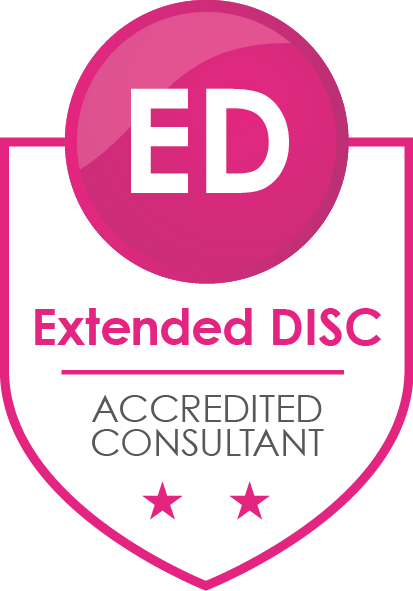Extended DISC Behavioural Profiling
Extended DISC profiling is an advanced behavioral profiling tool, that will help diagnose why your experiencing your current results and how to generate the required shift for improved outcomes.
Free Profile & Mini Report
DISC Energies Explained
DISC Dimension: Dominance
To understand the DISC typology even further descriptions are given for people who score comparatively high and comparatively low on each of the four DISC dimensions.

(D)ominance: Direct and forceful, people who prefer this style value action and achievement and tend to be fast-paced and task-focused.
Comparatively High
Here are some traits and behaviours that describe people who are comparatively high in Dominance:
- enjoy competition and challenge.
- are goal orientated and want to be recognised for their efforts.
- aim high, want authority and are generally resourceful and adaptable.
- are usually self-sufficient and individualistic.
- may lose interest in projects once the challenge has gone and they tend to be impatient and dissatisfied with minor detail.
They are usually direct and positive with people, enjoying being the centre of attraction and may take it for granted that people will think highly of them.
They may have a tendency to be rather critical of others. Consequently, other people may tend to see them as being rather domineering and overpowering.
Comparatively Low
Here are some traits and behaviours that describe people who are comparatively low in Dominance:
- tend to want peace and harmony.
- prefer to let others initiate action and resolve problems.
- are quiet and indirect in their approach to most situations.
- are usually cautious and calculate risks carefully before acting.
They are generally well liked because of their mild and gentle nature. Other people will tend to see them as being patient, calm, and thoughtful and a good listener.
DISC Dimension: Influence
To understand the DISC typology even further descriptions are given for people who score comparatively high and comparatively low on each of the four DISC dimensions.

(I)nfluence: Lively and social, people who prefer this style value relationships and enthusiasm and tend to be fast-paced and people-focused.
Comparatively High
Here are some traits and behaviours that describe people who are comparatively high in Influence:
- are strongly interested in meeting and being with people.
- are generally optimistic, outgoing, and socially skilled.
- are quick at establishing relationships.
Sometimes their concern for people and people’s feelings may make them reluctant to disturb a favourable situation or relationship.
Comparatively Low
Here are some traits and behaviours that describe people who are comparatively low in Influence:
- are usually socially passive.
- quite frequently have an affinity for things, machinery and equipment.
- are generally comfortable working alone.
- frequently have a tendency to be analytical and once they have sorted the facts out they communicate them in a straightforward direct way.
- tend to take little at face value.
They may well have learned and developed good social skills but they only bring these into play when logic dictates such tactics.
DISC Dimension: Steadiness
To understand the DISC typology even further descriptions are given for people who score comparatively high and comparatively low on each of the four DISC dimensions.

(S)teadiness: Even-tempered and loyal, people who prefer this style value cooperation and predictability and tend to be moderately-paced and people-focused.
Comparatively High
Here are some traits and behaviours that describe people who are comparatively high in Steadiness:
- are usually patient, calm and controlled.
- have a high willingness to help others particularly those they consider as friends.
Generally they have the ability to deal with the task in hand and to do routine work with patience and care.
Comparatively Low
Here are some traits and behaviours that describe people who are comparatively low in Steadiness:
- tend to enjoy change and variety in their work and non-work life.
- are expansive by nature and tend not to like routine and repetitive work/activities.
They enjoy stretching themselves intellectually and physically.
DISC Dimension: Conscientiousness
To understand the DISC typology even further descriptions are given for people who score comparatively high and comparatively low on each of the four DISC dimensions.

(C)onscientiousness: Private and analytical, people who prefer this style value accuracy and standards and tend to be moderately-paced and task-focused.
Comparatively High
Here are some traits and behaviours that describe people who are comparatively high in
Conscientiousness:
- are usually peaceful and adaptable.
- tend not to be aggressive.
- tend to be cautious rather than impulsive.
- avoid risk-taking.
- act in a tactful, diplomatic way and strive for a stable, ordered life.
- are comfortable following procedures in both their personal and business life.
They prefer sticking to methods that have proved successful in the past. They have a high acceptance of rules and regulations.
Comparatively Low
Here are some traits and behaviours that describe people who are comparatively low in Conscientiousness:
- are independent and uninhibited.
- resent rules and restrictions.
- prefer to be measured by results and are always willing to try the untried.
Free in thought, word and deed, they long for freedom and go to great lengths to achieve it. They feel that repetitive detail and routine work is best “delegated” or avoided.

Free Profile & Report
Gain access to an advanced behavioral profiling tool, free of charge, that will help diagnose why your experiencing your current results and how to generate the required shift for improved outcomes.
Training & Recognition






